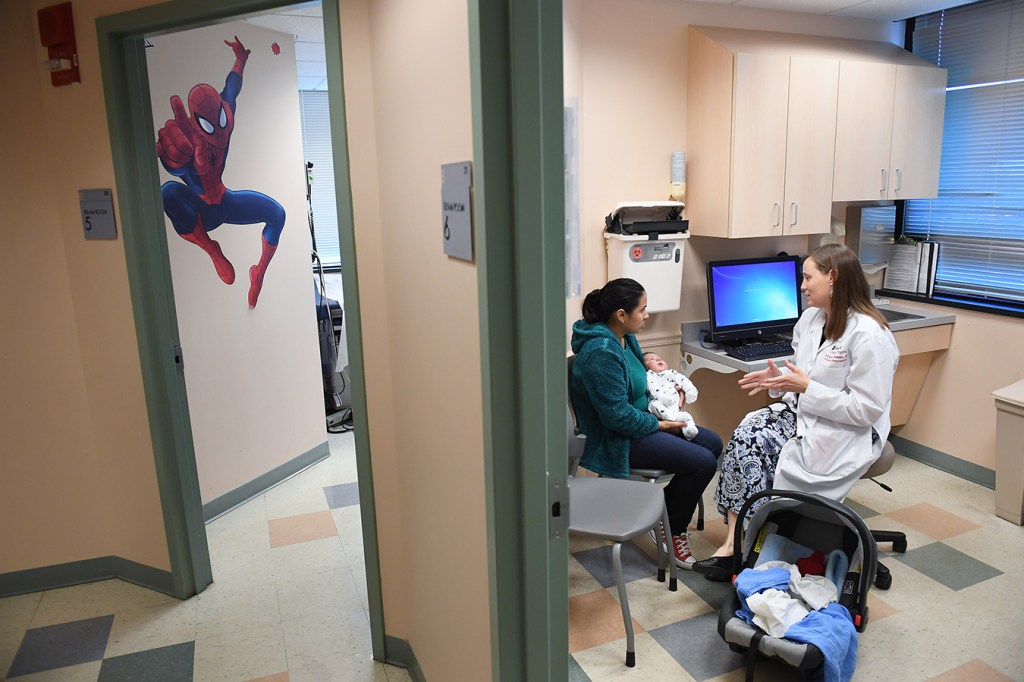When parts of the federal government ground to a halt this past weekend, Linda Nablo, who oversees the Children’s Health Insurance Program in Virginia, had two letters drafted and ready to go out to the families of 68,000 children insured through the program, depending on what happened.
One said the federal government had failed to extend CHIP after funding expired in September and the stopgap funding had run out. The program would be shutting down and families would lose their insurance.
The other letter said they could stop worrying because federal funding had finally come through and the program’s future was assured.
Since Monday’s deal to end the shutdown included a six-year reauthorization of CHIP, enrolled families in Virginia will get that second letter. The program will go on and no children will lose their health insurance.
Taking Stock Of Costs
After months of uncertainty, Nablo said she’s relieved. “Hugely relieved. It’s over and the program is safe, and we can all go back to our normal jobs,” she said.
Preparations to shut down the program in Virginia began over the summer, even before funding expired. Staff spent untold hours gearing up to end the program, retooling enrollment systems, changing contracts and more.
“Those aren’t huge dollar amounts,” Nablo said. “I think the cost more is in the worry from parents.”
CHIP covers children in low-income families — most can’t afford private insurance and their children might have had to go uninsured. Nationally, about 9 million children get health coverage through CHIP.
An Unprecedented Situation
In its 20-year history, CHIP had always been uncontroversial, even popular in both parties. Its funding needs to be periodically renewed, and it always had been taken care of well in advance of the money running out.
CHIP is a match program — states and the federal government split the cost. When states made their budgets for this year, they assumed federal funding for CHIP would be there, so they were blindsided by the funding gap.
Every state’s calculus for how long they could run on leftover money was different. In Texas, Hurricane Harvey threw off that state’s projections. Because of the disaster, it waived fees for CHIP and enrollment spiked, so it had less money coming in and more going out.
A handful of states — including Virginia — sent out letters warning families their coverage was in jeopardy because of the uncertainty in Congress.
“One state — Connecticut — did freeze enrollment between the week of Christmas and New Year’s,” said Joan Alker of the Georgetown University Center for Children and Families, which monitored CHIP funding closely the past few months.
Virginia’s Nablo said there might be other, more subtle, costs from all the uncertainty.
“I can’t quantify it, but I am sure there are states that held off on things like mounting an outreach program to encourage people to enroll because they didn’t know if the program was going to be there for them,” she said. “There may have been states that were thinking of implementing some efficiencies or innovations, but didn’t because — again — is the program going to be there?”
Six Years Of Certainty
Alker said she is happy with the CHIP deal Congress passed. It’s the same one they agreed on in September, she noted, so she’s not sure why it took a shutdown to finally get it through.
The deal keeps the federal investment in the program at its current level for two fiscal years. After that, the amount that states have to pay for the program will increase.
“At least states now have time to plan for that,” Alker said. “Overall, it really was a fair and reasonable compromise.”
What puzzles her is why it was extended only for six years when the Congressional Budget Office estimated extending CHIP for 10 years would save the federal government $6 billion, she said.
“The six-year [extension] is a small saver — it saves just under a billion dollars,” Alker said. “Now there’s nothing preventing Congress from coming back as they move ahead with the bigger budget deal — they could come back and extend CHIP for four more years and grab those savings.”
Impact On Children’s Uninsured Rate
Alker does worry that the months of uncertainty around CHIP may have already caused children to drop out of the program, increasing the uninsured rate among children, she said. That should become clear in the fall, when the Georgetown Center For Children and Families does its annual assessment of the children’s uninsured rate.
If that trend develops nationally, it hasn’t been the case in Virginia, where CHIP enrollment went up this past fall.
“We actually saw a boost in enrollment,” Nablo said. “I can’t really quite explain it.”
Maybe, she said, it was all the attention the unprecedented funding crisis brought to CHIP. A silver lining, perhaps, to many months of anxiety.
This story is part of a partnership that includes WAMU, NPR and Kaiser Health News. Selena Simmons-Duffin is a producer at NPR’s “All Things Considered,” currently on an exchange with Washington, D.C., member station WAMU.
KFF Health News' coverage of children’s health care issues is supported in part by the Heising-Simons Foundation.







